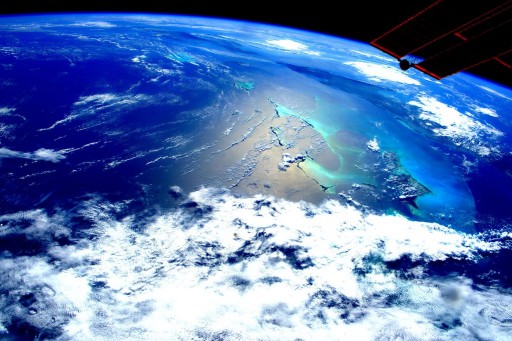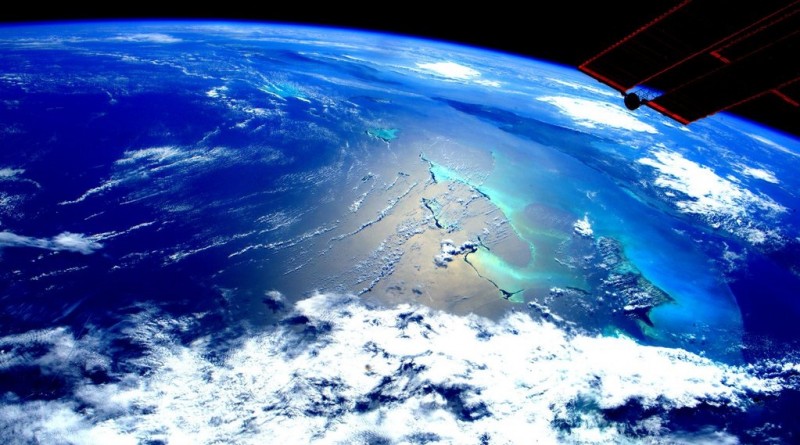ISS Operations Update – January 11, 2016

ISS Reboost:
ISS conducted a reboost Sunday night using the Progress M-29M spacecraft to deliver a delta-v of 1.65 meters per second, setting up phasing for Soyuz landing and rendezvous operations coming up in March.
Experiments:
NeuroMapping Experiment Ops [Spaceflight Effects on Neurocognitive Performance: Extent, Longevity, and Neural Bases (NeuroMapping) examined whether long-duration exposure to microgravity causes changes in the brain, including brain structure and function, motor control, and multi-tasking, as well as measuring how long it takes for the brain and body to recover from those possible changes. The experiment uses MI and FMRI scans before and after spaceflight and computer-based Mental Rotation Tests while on ISS.]
SKIN B Experiment Ops [SKIN B is a German Aerospace Center Payload that studies the the influence of microgravity on human skin. Crew members will complete at least eight experiment sessions during their flight. SKIN B measures skin moisture, water loss and studies physiological properties with a close-up imager. Skin elasticity, capillary blood flow and deep skin structure will be studied pre- and post-flight. On previous missions, it has been determined that the skin experiences a number of effects during long-duration space flights that resemble the aging process, but just in an accelerated form.]
Fluid Shifts [Fluid Shifts Before, During and After Prolonged Space Flight and Their Association with Intracranial Pressure and Visual Impairment. Known as the Fluids Shift study, this experiment is one of the most complex integrated experiments ever performed on ISS using pieces of US and Russian hardware to attempt to quantify the amount of fluid shifting from the lower body to the upper body when transitioning from a gravity to a microgravity environment. This will also lead to an understanding of effects of the fluid shift on fluid pressure in the head, changes to vision and eye structure. Effects on the eye caused by elevated intracranial pressure include globe flattening, choroidal folds, and alteration of the optic nerve.]
VEG-01 Investigation – Trimming of moldy plant areas and sample processing [VEGGIE or Veg-01 is a deployable plant growth unit to be set up on the Space Station to demonstrate the feasibility of a space garden. The experiment facility provides lighting and nutrient supply and is capable of supporting a variety of plant species that can be cultivated for educational outreach, fresh food and even recreation for crewmembers on long-duration missions. Thermal control is provided from ISS in-cabin systems and the carbon dioxide source is the ambient air aboard ISS.]
Cognition [Cognition, also known as Individualized Real-Time Neurocognitive Assessment Toolkit for Space Flight Fatigue uses a battery of tests to measure how spaceflight-related physical changes (microgravity, lack of sleep quality, diet) can affect the cognitive performance of humans during long-duration space flights. The experiment consists of ten brief computer-based tests that cover a range of cognitive functions and deliver immediate feedback on current and past results. A good neurocognitive function for effective performance during space missions makes an investigation of sleep and fatigue in space an absolute necessity. The testing operation consists of a sleep questionnaire and subjective evaluations at the beginning followed by the ten tests that focus on: sensor-motor ability, visual object learning and memory, attention and working memory, abstraction, spatial orientation, emotion recognition, abstract reasoning, complex scanning & visual tracking, risk decision making, and vigilant attention and psychomotor speed.]
Seismoprognoz Data Download [Seismoprognoz will measure the temporal and spatial scales of ionospheric disturbances caused by seismic phenomena in order to develop algorithms to detect plasma features of earthquakes and anthropogenic impacts from space-based instruments. The payload consists of an external monoblock, a Data Control and Acquisition Module, an attachment kit, flash memory and associated cables and connectors.]
Habitability Experiment Ops [Assessment of International Space Station Vehicle Habitability will see teams on the ground study video of the behavior of crew members within the habitable environment of ISS while the crew fills out questionnaires and collects video of areas of interest in order to provide an assessment of the habitability of ISS in its current state for a one-year mission. Results will be used to develop spacecraft with improved habitability properties to allow crew members to optimally utilize the onboard space.]
Identification – Micro-Accelerometer Data Download [The Identification Payload records structural dynamics data inside the individual modules of the Russian Segment to provide structural data to improve spacecraft design.]
Maintenance/Systems:
Nominal Inspections/Servicing Tasks (Morning Inspection, Caution & Warning Panel Check, Sozh System Maintenance) (Russian Crew)
Verification of ИП-1 Air Flow Sensor Position
MELFI – Temperature Data Recorder Battery Swap
MRM1 Fan Screen Cleaning
Photography of Plume Impingement and Deposit Monitoring Unit
Other Activities:
EVA Preparations: Equipment Lock Preparation, EMU In-Orbit Fit Verification
Periodic Fitness Evaluation [Crew members complete regular fitness checks to help flight surgeons to assess their current health and fitness status and adjust daily exercise protocols if needed. For the protocol which is performed once a month, crew members exercise on the CEVIS ergometer wearing biomed sensors to measure BP (blood pressure) & ECG (electrocardiogram).]
“Life on Station” – Documentary Video Shoot (Russian Crew Members) [Crew Members chronicle their lives aboard ISS for a documentary produced by Telekanal Roscosmos.]
Progress MS Transfer Operations

